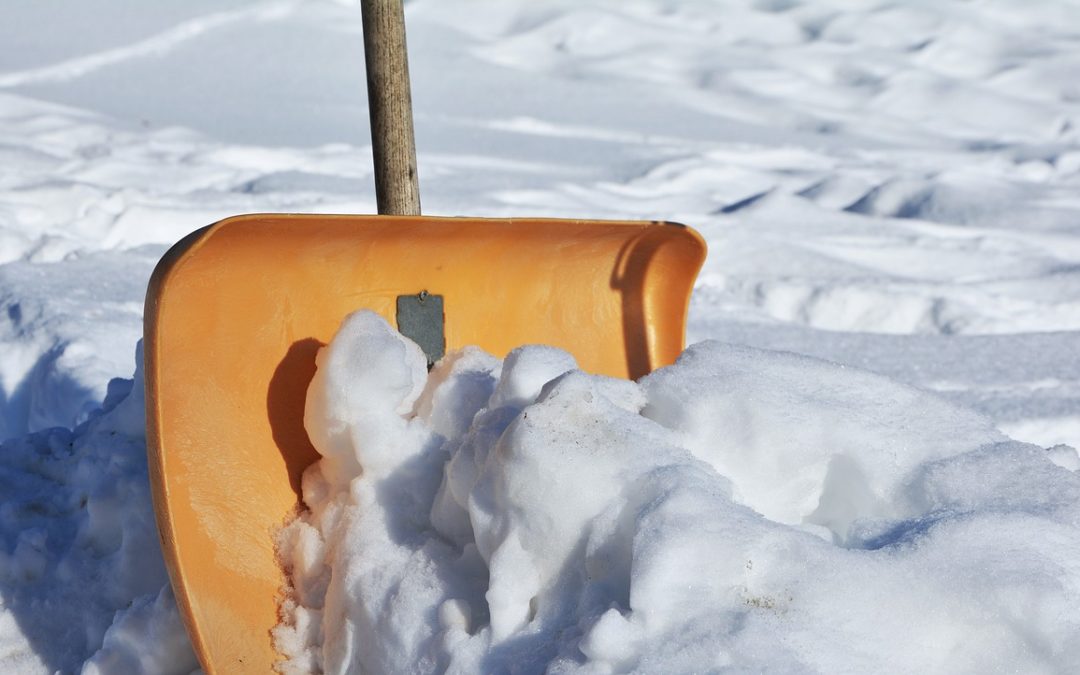Across the northern portions of the United States, snowfall totals can range from inches to feet during the winter season. Many areas also deal with ice, making winter less of a wonderland and more of a nightmare when it comes time for safe and effective snow and ice removal. When hit with heavy snow or ice, it’s essential to know a few removal tips to make easier work of this chore.
Snow Removal
Early preparedness before the first snowfall can make snow removal a bit easier. If living in an area prone to heavy snowfalls or if your weather forecaster has predicted an unusually large amount of snow, use large stakes to mark the lines of your driveway and walk. This is helpful for city snow plows as they try to clear streets and is a great way to help find the lines between pavement and grass, protecting the lawn from damage.
For health and safety, remember that heavy, wet snow also is known as heart-attack snow for a reason. It takes a lot of exertion to move that wet, heavy snow with a shovel. Take breaks and never be afraid to ask for help. If a neighbor offers to clear your driveway with a snow blower, say yes. When shoveling lighter snow, always pace yourself. Bend at the knees when lifting the shovel and avoid twisting to help reduce the risk of back strain/injury.
According to HomeAdvisor, “Don’t shovel soon after you wake up. A slipped disc injury is much more likely to occur in the morning due to the build-up of fluid in the disc from lying down all night.”
If several inches of snow is expected, it’s best to begin snow removal before the white stuff stops falling. It’s okay to get out there while it’s snowing. Shoveling or snow blowing smaller amounts always is easier than having to tackle the entire snowfall. In addition, it’s recommended to give your local snow removal service at least 24 hours notice if you’re going to need them.
Snow Removal Equipment
During the winter season, certain snow removal equipment can be helpful as well as essential. A sturdy shovel is a must. You can go with one that has an ergonomic handle or a traditional straight model depending on whichever feels better in your hands. A stiff broom is excellent for removing lighter snow from stairs and walkways.
For larger areas, a snow blower helps make snow removal less strenuous. Snow blowers come in a variety of sizes and stores like the Home Depot offer a selection. If you have a large area that needs snow removal, a 28- or 30-inch two-stage model may work and is ideal for up to two feet of snow. Consider plows attached to your garden/lawn tractor for long, wide driveways and other expansive areas.
Ice Removal
Calcium chloride, sand, and ice melt like magnesium chloride are choices for effective ice removal. A salt spreader helps distribute the deicing material, opt for a push-cart style for large areas or a hand-held model for steps and short walkways. Before applying any type of ice removal product or material to any surface, be sure to read the manufacturer’s instructions to avoid pitting or damage to surfaces. Keep in mind that some ice removal products can be harmful to pets.
Beyond walks and driveways, don’t forget about effective deicing for your vehicle. Home expert Bob Villa states, “Your medicine cabinet contains a useful tool for defrosting windows: rubbing alcohol.” Try spraying the alcohol on icy windows and then rubbing with a clean, old towel. Rubbing alcohol also can work as a de-fogger.
Before winter hits hard, evaluate your snow and ice removal equipment and action plan. Be prepared and this winter season can be bright and merry.

